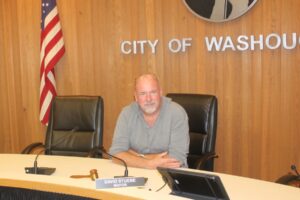If Camas continues on its current financial path, city leaders are predicting a future structural budget deficit.
This was the message delivered by City Administrator Pete Capell and Finance Director Cathy Huber Nickerson, during a recent City Council workshop.
“In the near term we are fine, we don’t have any concerns about the budget,” Capell explained. “My concerns are longer term, in that we are using new monies that come from growth, to pay for status quo, so we are not able to set-aside money or invest in what we need to serve that future growth.”
The Camas population, currently estimated at 21,210, is expected to grow 37 percent during the next decade to reach 35,000 by 2035.
Some of the most significant development during the next two decades will come north of Lacamas Lake, and also in the Green Mountain area bordered by Northeast Ingle and Goodwin roads. Infrastructure investments will be necessary.



